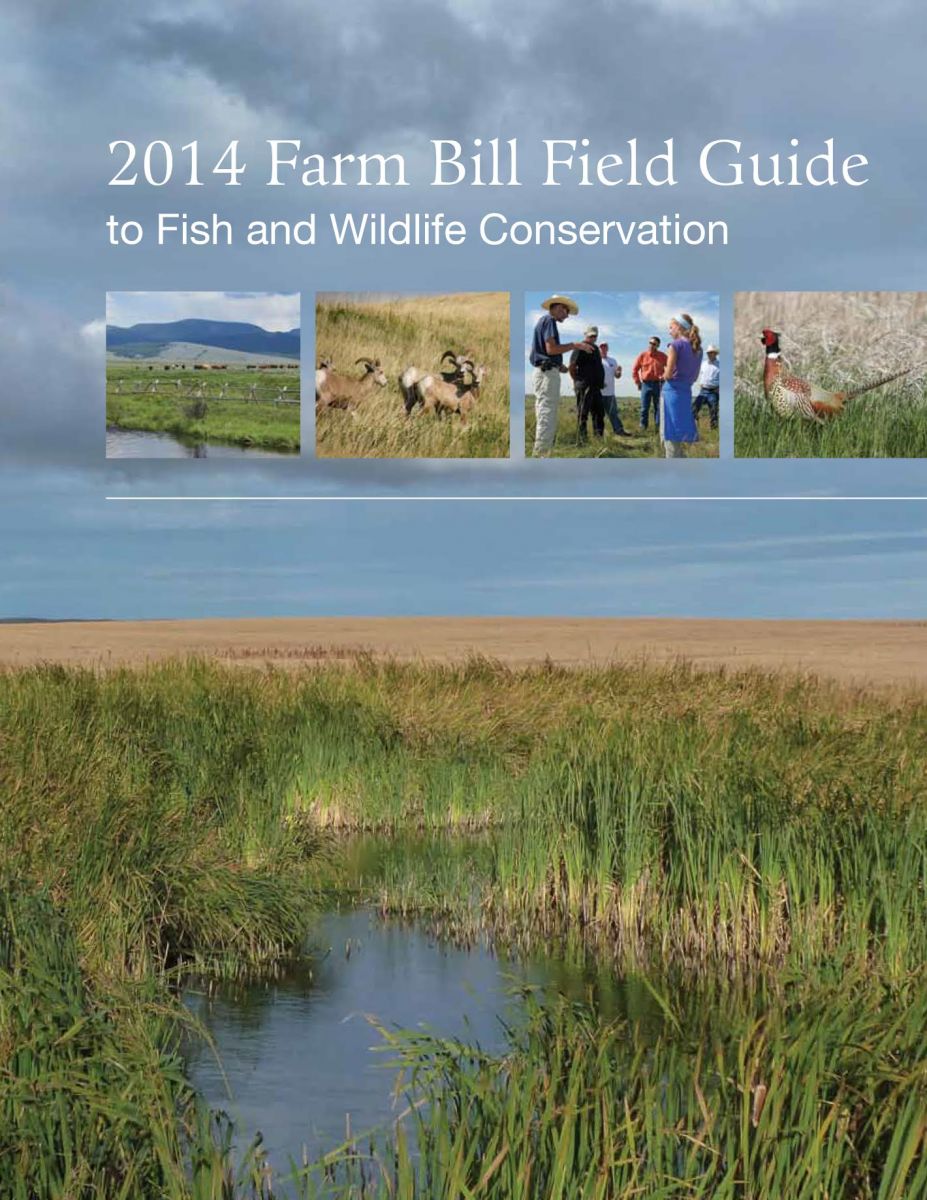Matthew Cimitile is the Communications Coordinator for the Appalachian Mountains Joint Venture
This week a coalition of government agencies, private organizations and bird partnerships under the umbrella of the North American Bird Conservation Initiative released the 2014 Farm Bill Field Guide to Fish and Wildlife Conservation.
This guide is a tool to assist those who work with private landowners and agricultural producers in implementing Farm Bill conservation programs that will improve soil health, water quality, and fish and wildlife habitat.
The need for such a guide is easy to see. More than two-thirds of the land area in the United States is privately owned. About 914 million acres are in farms or ranches and approximately 300 million acres are in private forest. These working lands, which represent much of the country’s remaining open space and habitat, are vitally important for the conservation of the nation’s natural resources.
And the Farm Bill is the most important tool enacted by Congress as well as the largest source of federal funding for conserving habitat on private lands.
Farm Bill conservation programs fund easements to protect agricultural lands, efforts to protect at-risk species on working lands, technical advisors to help landowners improve their operations while conserving natural resources, and much more. We hope this easy to navigate field guide serves as a valuable tool for fish and wildlife conservation providers – on-the-ground biologists, range conservationists, foresters, and others – in delivering the many Farm Bill conservation programs available to greatly enhance private lands conservation throughout the country.
Conservation programs within the Farm Bill have already proven successful in restoring and conserving many of our forests. Some recent examples include:
- Funding from Environmental Quality Incentives Program established the Working Lands for Wildlife initiative. One of the initiative’s many successes was providing young forest habitat restoration and technical assistance to private, non-industrial forest landowners. From 2011-2014, 12,000 acres of private forestland throughout the Appalachians were enrolled in the program to conserve the imperiled Golden-winged Warbler. Much of this forest management is accomplished by working with professional foresters to develop stewardship plans that ensure quality and sustainable management of private forest lands. Activities will also benefit approximately other at-risk species, including important game species such as the American Woodcock and Ruffed Grouse;
- The Conservation Reserve Program has helped landowners replant longleaf pines and associated warm season grasses throughout the Southeast – over 100,000 acres in Georgia alone. Many of the conservation practices that support longleaf pine forest health also benefit the federally listed gopher tortoise, including forest stand improvement, prescribed burning, and tree/shrub establishment;
- The Conservation Reserve Enhancement Program has supported thousands of miles of forest buffers planted to restore the Chesapeake Bay. Such buffers are effective at capturing excessive nitrogen, phosphorus, and sediment from farm field runoff. Agreements and cost-share assistance allowed Chesapeake Bay partners to restore over 4,000 miles of riparian buffers between 2002 and 2007. The current goal is to have 70 percent of the riparian areas forested by 2036.
Access the new field guide and learn more about how the Farm Bill provides tremendous opportunities for the conservation of fish and wildlife habitat and outdoor recreation at amjv.org/2014farmbillfieldguide.


